Hot Issue – What to do with a lost baby bird
Many people pick up baby birds off the ground and bring them into the vet the next day. Unfortunately, most of these baby birds do not survive. This article will tell you what to do when you find one, in order to increase it’s chances of survival before you get it to the vet or animal rescue.
[ad name=”Tweet”]
RULE NUMBER ONE:
Do NOT pick up fledgelings. These are baby birds that are not big enough to fly but have already left the nest.
Their parents will continue to feed them on the ground until they are big enough to fly and find food on their own. Many people pick these birds up and “rescue” them, when in fact they are doing more harm than good. Unless that baby bird’s life is in jeopardy, I would leave it exactly where it is. These birds die faster in captivity than in the wild. If you have picked one up, you can put it back – the parents should continue to feed it.
RULE NUMBER TWO:
Warm the bird. Most people put these babies in boxes with tissue paper or straw and this is NOT enough heat.
These birds cannot produce enough heat on their own and need an external source of heat in order to survive. I find what works best is a plastic Tupperware like container, not a box,with a few holes for oxygen on the sides, and a hot water bottle or wheat microwavable pillow to keep them warm. They can also be or covered with a cotton cloth (lightweight only). Make sure that you keep the heat source constant, and not let it go cold in the night. Do not put the bird on a windowsill near the cold weather. If you have an infra red lamp, even better! Also make sure you are not cooking the bird. if it is too hot to the touch for the back of your hand, it’s too hot for the bird!
RULE NUMBER THREE:
Food. Most people will put a few seeds in with most wild birds they find and often these birds are too little, too shocked or too cold to eat at all. It is vital to try get food into them especially if you are warming them. Don’t warm them and wait till the morning to feed them as the lack of glucose will also be very dangerous for them. Feeding the correct food is vital as well!!
Birds can broadly be divided into seed eaters, fruit eaters and birds that can eat a diet with animal protein in it. If you’re not sure what bird you are dealing with, try and look at the beak to get a general idea of the diet of the bird. Most parrot and parakeet like birds tend to be predominantly fruit eaters, so if you find a baby bird with a beak shaped like a parrot, the odds are it eats fruit. You can feed these mashed bananas with water, a human baby’s fruit puree or even apple sauce!
Sparrows, pigeons, doves and finches with short, straight beaks tend to eat seed diets. You can feed these any cereal based childs porridge, or a rearing mixture from a pet shop. Meat eaters include the Swallow, many water birds, birds of prey such as Owls, Hawks and Falcons. Their beaks vary in shape depending on their main protein source.
You can feed these dog or cat food mixed with water and ground down finely. Cat pellets soaked in water can also be hand fed whole.
HOW TO FEED THESE BIRDS
Birds have a sac called a crop which fills up with food and then passes it down to the stomach. The crop lies on the outside of the neck. Birds that are picked up with a full crop probably don’t need feeding right away. You can check to see if the crop is full by feeling for food particles inside the crop. If you’re not sure, rather feed.
Open the beak – you will see the tongue of the bird. often the tongue has a little vent in the middle and if you look up at the palate, you will often see a similar vent for air from the nasal passages. Avoid putting food directly on these vents as the bird may choke.
If you have a syringe or a dropper, these are the best to feed most birds pureed food. Put the syringe or dropper right at the back of the mouth, behind the tongue, almost down the throat. Squeeze food out. Stop when the mouth is filling up and let the bird swallow first before continuing to feed it. If the bird takes the food well and cheeps for more, or even opens it’s mouth, the odds are that it is a strong bird and has a good chance of survival. If the bird seems to resist and the food just runs out the side of the mouth, without swallowing, it is in poor condition and may not survive.
You will see the crop filling up as the bird swallows. Feed the bird until the crop is nice and full. Most people tend to feed too little, thinking one or two drops of food will be enough. Remember, these birds have a very high metabolism and need to eat a lot relative to their body size!
IF THE BIRD WON’T EAT
Very weak birds often won’t eat. You can give these birds a little glucose in water (only at the back of the mouth or even a little down the throat) and you must warm them and try again in about half an hour with food. if they are still weak, repeat the glucose. Rescue remedy, a homeopathic preparation is also safe for birds in the pill form, dissolved in water. You can mix it with the glucose. Remember, these birds often die, despite your best efforts.
REMEMBER
The smaller the bird, the lower it’s chances of survival. Try to get it through the night and take it to an animal rescue or vet as soon as possible. Check the vet is bird friendly as some vets will tend to euthanaze, not rear. These tiny birds may also have defects which made their parents kick them out the nest early as they wouldn’t have survived anyway.
Baby birds that try to peck at your hand when you go near them to feed them are probably hungry and healthy and not attacking you. Don’t get a fright.
USEFUL LINKS
To identify the species of baby bird you have found – http://babybirdid.com/
All about bird beaks and what they eat – http://www.backyardnature.net/birdbeak.htm
South African wild bird rescue and rehabilitation – http://www.freemewildlife.org.za/

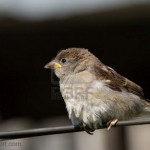

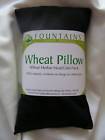


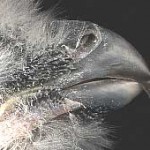
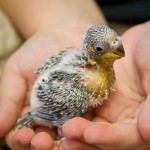
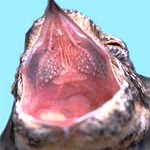


Leave a Reply
You must be logged in to post a comment.